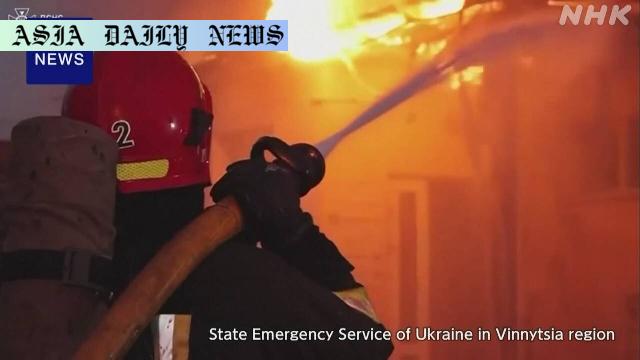Ceasefire: Russian forces intensify attacks in Ukraine despite US President Donald Trump’s call for a ceasefire agreement.
Key Point 1: Russian forces continue attacking Ukraine, defying ceasefire calls.
Key Point 2: Strikes include over 400 drones, killing at least two and injuring eight.
Key Point 3: Trump threatens severe tariffs on Russian goods if no resolution is reached.

Introduction: Rising Tensions and Persistent Violence
The conflict between Russia and Ukraine continues to escalate despite calls for peace and a ceasefire from notable international figures such as US President Donald Trump. Over the recent days, Russian forces launched a series of devastating attacks, deploying more than 400 drones and a missile across Ukrainian territories. The ongoing violence has not only led to tragic loss of lives but also inflicted significant damage on vital infrastructure, raising questions about the prospect of peace and stability in the region.
The attacks, which occurred from Tuesday night to Wednesday, caused widespread destruction in various parts of Ukraine. The western region of Vinnytsia was hit by strikes targeting factories and other facilities, leaving eight individuals injured. Meanwhile, in the eastern area of Kharkiv, intense attacks led to at least 17 explosions within a short span of 20 minutes. Local authorities confirmed the deaths of two people, with several others injured in the aftermath. These incidents underscore the relentless nature of the conflict and the human toll it continues to exact.
The International Future of Ceasefire Talks
President Trump’s recent statements highlight the growing impatience within the global community over the lack of progress in achieving a ceasefire. In a public address, Trump reiterated NATO’s commitment to bolstering Ukraine’s defense capabilities, emphasizing the importance of sending additional weapons to help the nation withstand Russian aggression. However, he also issued a stern warning to Moscow, promising severe economic consequences if the violence does not cease within the next 50 days.
Trump’s proposal includes the implementation of punitive tariffs targeting countries that import products from Russia. This approach aims to leverage economic pressure to force Moscow’s hand, signaling the United States’ resolve to take decisive action if diplomatic efforts fail. While such measures could potentially weaken Russia’s financial standing, critics argue that they may also lead to unintended consequences, exacerbating global economic challenges and deepening divisions among international stakeholders.
The Humanitarian Cost and Urgency of Resolution
Amid the political posturing and strategic maneuvering, the human cost of this conflict remains a stark and sobering reality. The recent attacks have displaced countless Ukrainian citizens, leaving communities reeling from the destruction of homes, factories, and essential infrastructure. As winter approaches, the urgency of addressing the humanitarian crisis grows, with aid organizations and governments scrambling to provide necessary support to those affected.
The world watches as Ukraine continues to endure relentless aggression, raising concerns over the potential escalation of violence and its far-reaching implications. The call for a ceasefire is not merely a political issue but a moral imperative to prevent further suffering. For peace to prevail, both diplomatic and humanitarian efforts must intensify, fostering dialogue and cooperation among all parties involved.



Commentary
Examining President Trump’s Ceasefire Call
The ongoing violence between Russia and Ukraine serves as a poignant reminder of the fragility of international peace. With President Trump’s call for a ceasefire, the world’s attention is drawn to the urgent need for dialogue and resolution. However, the response from Moscow appears dismissive at best, indicating the complexity and challenges of brokering a truce amid entrenched hostilities and geopolitical divisions.
Trump’s threat of imposing severe tariffs on nations importing Russian goods adds an economic dimension to the conflict. While it demonstrates a firm stance by the United States, the effectiveness of such measures remains uncertain. Historical precedents suggest that economic pressure can be a double-edged sword, potentially impacting civilians and global markets as much as it targets political leaders. This raises critical questions about the moral and practical implications of such strategies.
The Deepening Crisis in Ukraine
From a humanitarian perspective, the plight of Ukrainian citizens caught in the crossfire is deeply concerning. The destruction of infrastructure and displacement of communities highlight the urgent need for coordinated international aid. Without immediate intervention and long-term planning, the consequences could ripple far beyond the region, affecting neighboring countries and the broader global order.
The international community faces a crucial test in addressing this crisis. Beyond condemning aggression and issuing policy statements, tangible actions are required to alleviate suffering and pave the way for a sustainable resolution. Whether through diplomatic outreach or increased support for Ukraine’s defense, global leaders must rise to the occasion and uphold the principles of sovereignty and human dignity.